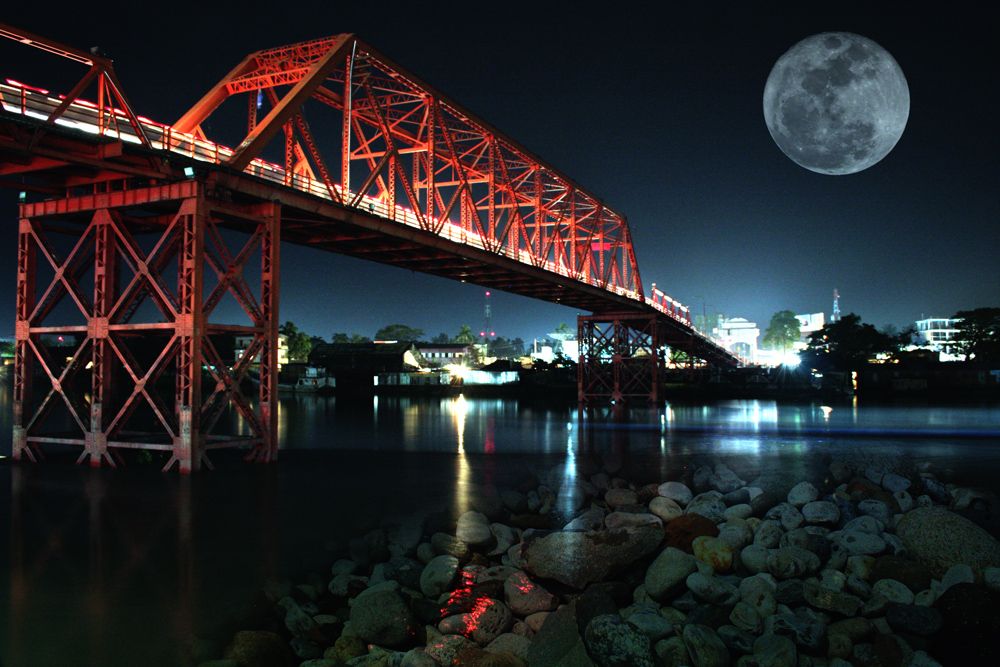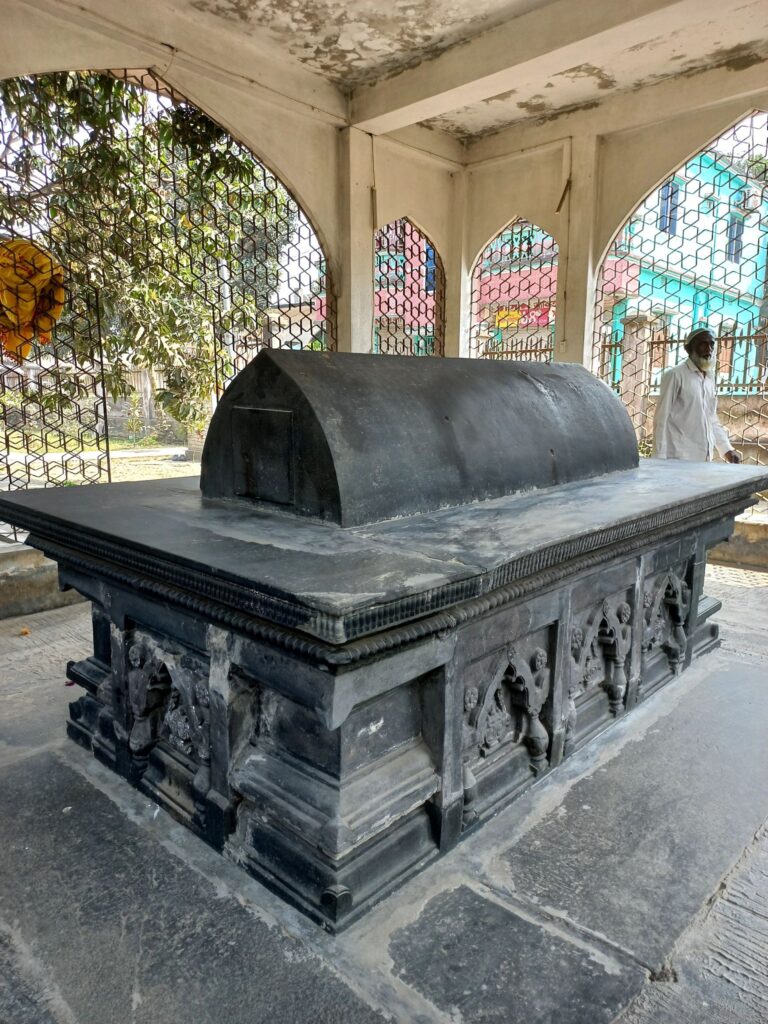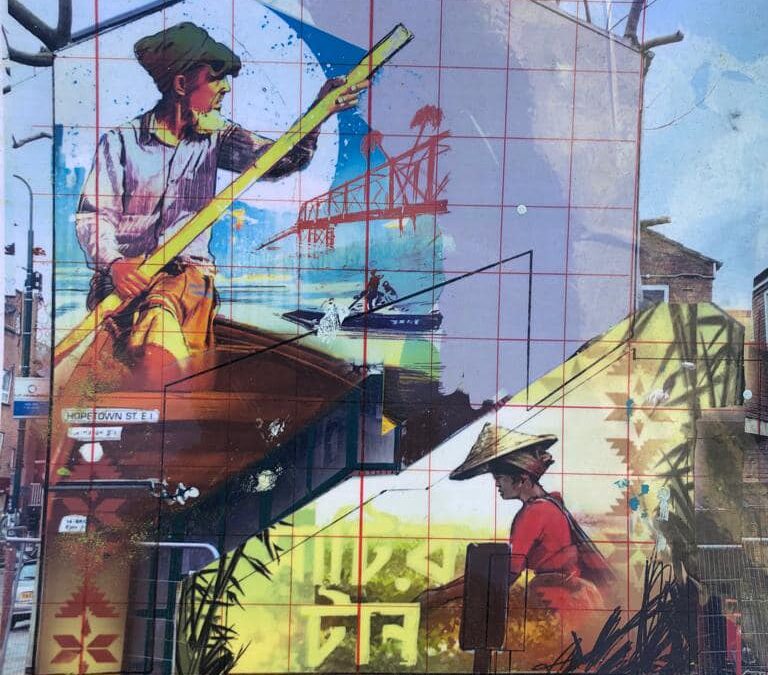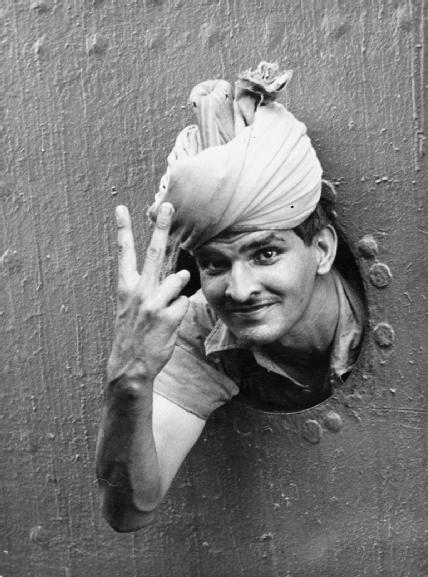Is it a celebration of diversity and an aid to community cohesion in Brick Lane, or is it a case of, art washing and whitewash of history?
A new image or reinforcing the old?

A lot of controversies has been caused on social media by Tower Hamlets Council’s unveiling of a new Brick Lane mural on Friday 18th March 2022. On one side you have the great and the good huddling round photos celebrating, on the other comments on social media, accusing it as a cover-up of the cracks of social exclusion and widening inequalities in Tower Hamlets.
A mural in the modern-day sense is a piece of public art, following on from the practice first established in Mexico in the early 20th century. Sanctioned by public authorities, they narrate a story, sometimes marking an event in history. So let’s look at this story paid for and sanctioned by Tower Hamlets Council, narrating the story of Bangladeshi’s in the East End.
The mural is an image of what appears a fisherman next to the Surma Bridge in Sylhet and a female paddy field worker. The image does not correspond to the reality of today’s Bangladesh. First, the Surma River next to the bridge is hardly navigated by boats, let alone fishing boats due to the undercurrents in the water, with both sides of the embankment urbanised. Second, agriculture in Bangladesh has rapidly mechanised, with manual agricultural work now a rarity. More and more rural families, rent out their land, with the main income derived from the urban or foreign remittance.
So the mural is not an accurate reflection of today’s Bangladesh/Bengal but an imagination, but whose imagination. Is it a backwater full of fishermen and plantation field hands? A caricature?
Another image of Bengal

On the same day as the mural went up, an image was posted on social by AFP Bangladesh Journalist, Shafiqul Alam. It was an image of the grave of Ghiyasuddin A’zam Shah (reign 1390 – 1410 CE), of the Bengal Sultanate. During his reign, Bengal, along with Ming China, was a centre of global manufacturing, with Ghiyasuddin having personal correspondences with the Chinese Emperor. He sent envoys to the Arabian peninsula and financed the construction of schools in the Hejaz.
He was a famous patron of the arts, corresponding with the Persian poet Hafez as well as commissioning the first literary epic in the Bengali language, Yusuf and Zuleikha by Shah Muhammad Sagir. It is an image of Bengal or Bangladesh you will not find in any officially sanctioned message by Tower Hamlets Council. Nor any images of the 400-year-old history that Bengalis had with the East End. An image which highlights the sophistication of Bengal and its impact on world civilisation.
Shafiq in his post informs us that Ghiyasuddin’s grave is covered with Buddhist motifs, an acknowledgement to the past of Bengal being a world centre of Buddhism and the fluid and nuanced nature of culture, and his very own tribute to the rich cultural history of the region. Giyasuddin grave signifies the link to the ancient past of Bengal going back to the Emperor Ashoka, but also the indication of its future as a hub of trade, commerce and ideas from throughout the world.
شکرشکن شوند همه طوطیان هند
All the parrots [poets] of Hind have become sugar-shattering [excited]
زین قند پارسی که به بنگاله میرود
That this Persian candy [ode], to Bengal is going [on].
حافظ ز شوق مجلس سلطان غیاث دین
Of love for the assembly of the Sultan Ghiyasu-d-Din, oh Hafiz
غافل مشو که کار تو از ناله میرود
Be not silent. For, from lamenting, your work is going on
Hafez of Siraz – Diwan-e-Hafez
Getting Taught History
Earlier last week, the government published the race action plan from the controversial Sewell Report. The action plan speaks of establishing “a diverse panel of historians to develop a new knowledge-rich model history curriculum by 2024 to support high-quality teaching of our complex past”.
The teaching of history is important in establishing understanding and sustainable community cohesion. It is important in healing the wounds which divide Tower Hamlets, divisions that allow unscrupulous political operators to parrot caricatures, polarising residents for political gains.
Once upon a time…
I remember a story narrated to me by a parent at a community language school (the service has since been disbanded by Tower Hamlets Council). A parent, from South London, told him an anecdote. The day his child came home and told him that he learnt in school that Bangladesh was a poor and backward country.
In response, the father took the child out of the school for the day. They went on a tour of London, starting with Kohi-Noor and the Crown Jewels in the Tower of London. The next day, the parent had a meeting with the headteacher to explain the unauthorised absence. He beckoned to the child to explain the absence, and the child replied, “I was taught in school that Bangladesh was a poor and backward country. But that is a lie!” and then the child proceeded to school the Head Teacher, that the prosperity we enjoy in the United Kingdom today is due to the contribution of communities and peoples from throughout the world.
And as they say, the rest is history.
‘He who controls the past controls the future. He who controls the present controls the past.’
George Orwell – 1984



Recent Comments